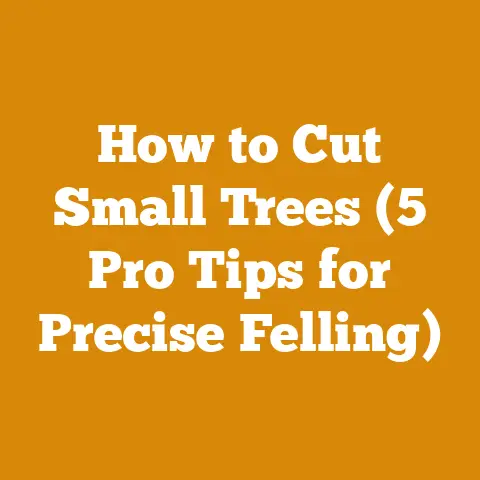HT 101 Pole Saw Tips (5 Expert Hacks for Efficient Pruning)
Do you ever find yourself gazing at those towering branches, the ones just out of reach with your trusty ladder and handsaw?
Or perhaps you’re a seasoned pro, tackling overgrown trees on a daily basis.
Either way, having the right tools and techniques for pruning is essential.
In this article, I’m diving deep into the world of pole saws, specifically the Stihl HT 101, and sharing five expert hacks to help you prune efficiently and safely.
I remember the first time I tried to tackle a large oak tree in my backyard.
I envisioned a beautifully shaped canopy, but the reality was a tangled mess of awkward cuts and a very sore back.
That’s when I realized the importance of proper technique and the right equipment.
A pole saw, like the HT 101, can be a game-changer, but only if you know how to use it effectively.
HT 101 Pole Saw Tips (5 Expert Hacks for Efficient Pruning)
Let’s get into the nitty-gritty of maximizing your HT 101 pole saw’s potential.
Understanding Your HT 101 and Its Capabilities
Before we jump into the hacks, it’s crucial to understand the basics of your HT 101.
This isn’t just about knowing where the on/off switch is.
It’s about understanding its limitations and strengths.
- Reach: The HT 101 boasts a significant reach, allowing you to tackle branches high up without the need for precarious climbing.
However, remember that the farther you extend the pole, the more challenging it becomes to control. - Power: While powerful, the HT 101 isn’t a substitute for a full-sized chainsaw.
It’s designed for pruning, not felling large trees.
Overloading it with thick branches will only lead to frustration and potential damage. - Weight: Holding a pole saw at full extension for extended periods can be tiring.
Knowing your physical limitations is key to preventing accidents and ensuring a clean, efficient job.
Hack #1: The Art of the Undercut
One of the most common mistakes I see is trying to cut a branch straight through from the top.
This often results in the branch tearing away before the cut is complete, leaving a jagged, unsightly wound on the tree.
The Solution: The Undercut
- Make a small cut on the underside of the branch, about a third of the way through.
This creates a “hinge” that prevents the branch from tearing downwards. - Move to the top of the branch and make a second cut, slightly further out than the undercut.
Continue cutting until the branch is severed.
This technique ensures a clean, smooth cut that promotes healthy healing for the tree.
I’ve personally seen a dramatic difference in the healing process when using the undercut method compared to simply hacking away at branches.
Hack #2: Mastering the Angle of Attack
The angle at which you approach the branch with your pole saw significantly impacts the efficiency and safety of the cut.
The Ideal Angle:
- Slightly angled downwards: This allows gravity to assist with the cut, making it easier to control the saw and prevent kickback.
- Avoid cutting directly upwards: This can lead to the saw binding and potentially kicking back towards you.
I’ve found that visualizing the cut beforehand and adjusting my stance to achieve the optimal angle makes a world of difference.
It’s like playing a game of pool – you need to consider the angle of the cue stick to make the shot.
Hack #3: Sharpening for Success
A dull chain is not only inefficient, but it’s also dangerous.
It requires more force to cut, increasing the risk of kickback and fatigue.
The Sharpening Routine:
- Regular Inspection: Check the chain before each use for dullness, damage, or loose links.
- Proper Tools: Invest in a quality chainsaw sharpening kit that includes a file guide and round files of the correct size for your chain.
- Consistent Technique: Follow the manufacturer’s instructions for sharpening.
Maintaining the correct angle and depth is crucial for optimal performance.
I’ve learned the hard way that neglecting chain maintenance is a false economy.
A sharp chain cuts faster, requires less effort, and extends the life of your pole saw.
Cost Considerations: Sharpening vs. Replacement
Let’s break down the costs associated with chain maintenance:
- Sharpening Kit: A decent sharpening kit typically costs between $20 and $50.
- Sharpening Service: Hiring a professional to sharpen your chain can cost anywhere from $10 to $20 per sharpening.
- Replacement Chain: A new chain for the HT 101 usually ranges from $30 to $50.
My Recommendation: Learn to sharpen your own chain.
It’s a skill that will save you money in the long run and ensure that your pole saw is always performing at its best.
I’ve found that sharpening my chain every few uses keeps it in top condition and avoids the need for frequent replacements.
Hack #4: Strategic Branch Removal
Before you start hacking away at random branches, take a step back and assess the overall shape and health of the tree.
The Pruning Plan:
- Identify Dead, Diseased, or Damaged Branches: These are the first to go.
Removing them improves the tree’s overall health and appearance. - Thin Out Crowded Areas: Removing branches that are rubbing against each other prevents damage and promotes air circulation.
- Maintain a Balanced Shape: Prune to create a natural, aesthetically pleasing shape.
Avoid removing too much from one side, as this can weaken the tree.
I like to think of pruning as sculpting.
You’re shaping the tree to its full potential, removing the unwanted elements to reveal its natural beauty.
Cost Implications of Poor Pruning
Improper pruning can lead to several costly consequences:
- Increased Risk of Disease: Jagged cuts and damaged bark create entry points for disease and pests.
- Structural Weakness: Removing too much foliage can weaken the tree’s structure, making it more susceptible to wind damage.
- Reduced Fruit Production: Improper pruning can negatively impact fruit production in fruit trees.
- Costly Tree Removal: In severe cases, improper pruning can lead to the premature death of the tree, requiring costly removal.
Example: I once saw a homeowner who aggressively pruned a mature maple tree, removing a significant portion of its canopy.
Within a few years, the tree became structurally unstable and had to be removed at a cost of over $1,000.
A little knowledge and careful pruning could have saved them a lot of money and heartache.
Hack #5: Safety First, Always
No matter how experienced you are, safety should always be your top priority.
Essential Safety Gear:
- Eye Protection: Wear safety glasses or a face shield to protect your eyes from flying debris.
- Hearing Protection: Pole saws can be noisy.
Wear earplugs or earmuffs to protect your hearing. - Head Protection: A hard hat is essential to protect your head from falling branches.
- Gloves: Wear sturdy gloves to protect your hands from cuts and abrasions.
- Proper Footwear: Wear work boots with good ankle support and slip-resistant soles.
Safe Operating Practices:
- Maintain a Stable Stance: Keep your feet firmly planted on the ground and avoid overreaching.
- Be Aware of Your Surroundings: Watch out for power lines, fences, and other obstacles.
- Never Work Alone: It’s always a good idea to have someone nearby in case of an emergency.
- Take Breaks: Working with a pole saw can be physically demanding.
Take frequent breaks to avoid fatigue.
The Cost of Neglecting Safety
The cost of neglecting safety can be far greater than the price of safety gear.
Injuries can lead to:
- Medical Bills: Even minor injuries can result in significant medical expenses.
- Lost Wages: Time off work due to injury can lead to lost income.
- Long-Term Disability: In severe cases, injuries can result in long-term disability and reduced earning potential.
- Property Damage: A loss of control can lead to damage to property.
Personal Anecdote: I once witnessed a fellow firewood enthusiast attempt to use a chainsaw without proper safety gear.
A moment of carelessness resulted in a serious leg injury that required extensive medical treatment and months of rehabilitation.
The cost of the accident far outweighed the cost of a pair of chaps and a few minutes of preparation.
Budgeting for Pole Saw Pruning Projects
Now, let’s talk about the financial side of things.
Understanding the costs involved in pole saw pruning projects is essential for planning and budgeting effectively.
Factors Affecting Project Costs
Several factors influence the overall cost of a pole saw pruning project:
- Tree Size and Complexity: Larger, more complex trees require more time and effort to prune, increasing labor costs.
- Accessibility: Trees in difficult-to-reach locations may require specialized equipment or techniques, adding to the cost.
- Wood Disposal: The cost of disposing of the pruned branches can vary depending on local regulations and disposal options.
- Your Skill Level: If you’re hiring a professional, their hourly rate will depend on their experience and expertise.
- Location: Prices for tree services vary depending on geographic location.
Cost Breakdown:
Let’s break down the typical costs associated with a pole saw pruning project:
- Equipment Costs:
- Pole Saw Purchase: $300 – $800 (depending on brand and features)
- Safety Gear: $100 – $200 (safety glasses, hearing protection, hard hat, gloves)
- Sharpening Kit: $20 – $50
- Labor Costs (if hiring a professional):
- Hourly Rate: $50 – $150 (depending on experience and location)
- Project Fee: Some professionals charge a flat project fee instead of an hourly rate.
- Disposal Costs:
- Curbside Pickup: Some municipalities offer free or low-cost curbside pickup of yard waste.
- Chipper Rental: Renting a wood chipper can cost $100 – $300 per day.
- Landfill Disposal: Disposing of branches at a landfill typically costs $20 – $50 per load.
- Permit Costs (if required):
- Some municipalities require permits for pruning certain types of trees.
Permit fees can range from $25 to $100.
- Some municipalities require permits for pruning certain types of trees.
Example Budget:
Let’s say you have a medium-sized oak tree that needs pruning.
You decide to hire a professional to do the job.
Here’s a possible budget:
- Labor (4 hours @ $75/hour): $300
- Disposal Fee: $50
- Total Project Cost: $350
Cost Optimization Tips:
- Do it Yourself: If you’re comfortable using a pole saw and have the necessary skills, you can save money by doing the pruning yourself.
- Get Multiple Quotes: If you’re hiring a professional, get quotes from at least three different companies to compare prices.
- Consider Seasonal Discounts: Some tree service companies offer discounts during the off-season.
- Chip the Branches: Renting a wood chipper and chipping the branches can save you money on disposal costs.
Plus, you can use the wood chips as mulch in your garden. - Proper Tool Maintenance: Keep your pole saw in good working condition to avoid costly repairs or replacements.
Data-Driven Insights:
According to a recent survey by the Tree Care Industry Association (TCIA), the average cost of tree pruning in the United States is $482.
However, this figure can vary significantly depending on the factors mentioned above.
Firewood Preparation Cost Considerations
If the wood from the pruned branches is suitable for firewood, you can further offset your costs by processing and selling it.
Additional Costs:
- Firewood Processor (Optional): $2,000 – $10,000 (for larger volumes)
- Wood Splitter (Optional): $200 – $2,000
- Moisture Meter: $20 – $50
- Storage Space Rental (if needed): Varies depending on location
Firewood Market Rates:
The price of firewood varies depending on location, wood species, and moisture content.
As of 2023, the average price per cord of seasoned firewood in the United States ranges from $200 to $400.
Calculating Drying Time:
The drying time for firewood depends on several factors, including wood species, size of the pieces, and climate.
A general rule of thumb is that firewood needs to dry for at least six months to achieve a moisture content of 20% or less.
Formula:
Estimated Drying Time (months) = K * (Moisture Content – Target Moisture Content)
Where K is a constant that varies depending on the wood species and climate.
Example:
Let’s say you’re drying oak firewood in a moderate climate.
The initial moisture content is 50%, and the target moisture content is 20%.
The value of K for oak in a moderate climate is approximately 0.2.
Estimated Drying Time = 0.2 * (50 – 20) = 6 months
Conclusion: Prune Like a Pro, Budget Like a Boss
Mastering the HT 101 pole saw and understanding the associated costs can empower you to tackle pruning projects with confidence and efficiency.
Remember to prioritize safety, maintain your equipment, and plan strategically.
By following these tips, you can achieve beautiful, healthy trees without breaking the bank.
Whether you’re a homeowner looking to improve the curb appeal of your property or a professional landscaper striving for efficiency, these hacks will help you get the job done right.
And remember, a little planning and preparation can go a long way in saving you time, money, and potential headaches.
Now go forth and prune with precision!






